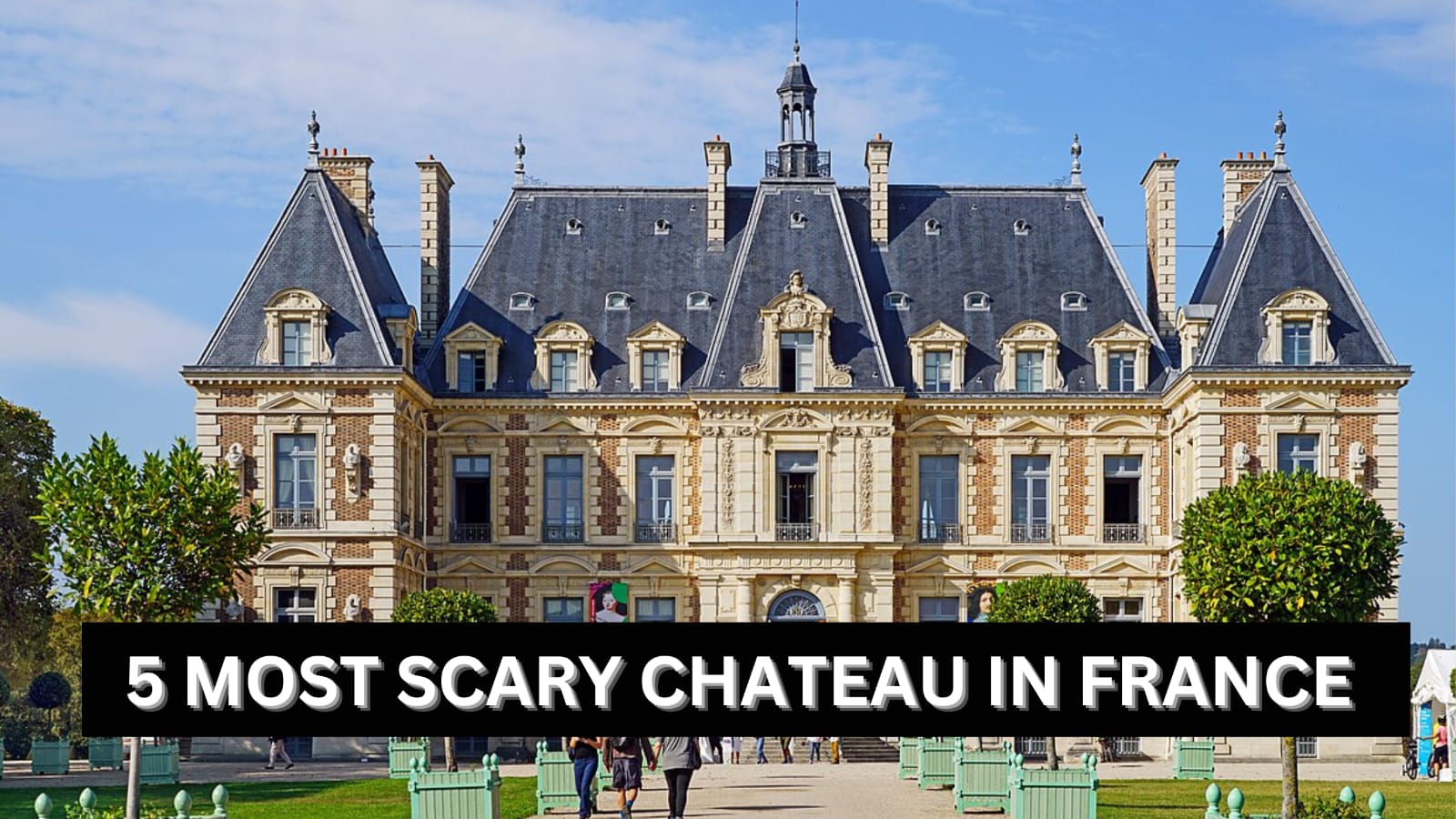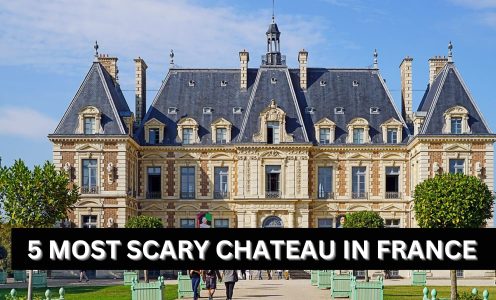5 MOST SCARY CHATEAU IN FRANCE
Château de Puymartin
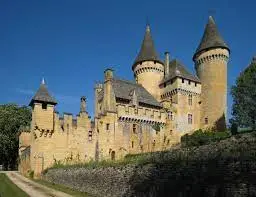
At the beginning of the Chateau Hundred Years War, the Castle of Puymartin played a major part in the conflict between France and England. On January 8th, 1357, when the Castle was attacked by English mercenaries, the Consul in Sarlat had envoys sent to negotiate their departure in exchange for money. To avoid being captured and occupied again, it was decided that the battlements and the defensive features of the walls and roofs of the Castle should be removed and destroyed and the floorboards ripped out.
Puymartin therefore remained virtually in ruins throughout the Hundred Years War. The consuls of Sarlat bought the domain back from the English but then abandoned the castle Radulphe de Saint-Clar re-purchased it in 1450 and enlarged it. In the 16th century, Raymond de Saint-Clar defeated the Protestants during the French Wars of Religion chateau.
Radulphe de Saint-Clar re-purchased it in 1450 and enlarged it. In the 16th century, Raymond de Saint-Clar defeated the Protestants during the French Wars of Religion. Under the name of Capitaine de Puymartin, he expelled the Huguenots from Sarlat.
During the 18th century, Jean de Saint-Clar contended with his sister Suzanne for possession of the castle. Suzanne won and kept Puymartin.
In 1789, the Castle was owned by Marquis François Roffignac Carbonnier de Marzac. At the end of the 19th century, the castle was completely renovated by his great-grandson, Marquis Marc Roffignac de Carbonnier de Marzac. The Marquis’s only daughter married Count Jacques de Montbron in 1920. The Montbron family still owns the Castle to this day. They preserved the furniture, the tapestries of Aubusson, and the exceptional paintings.
In the mythology room paintings are grisailles fixed onto the woodwork with egg white. They were painted between 1650 and 1571 by French artist Philippe Lemaire and feature scenes from Greek mythology
Château de Brissac
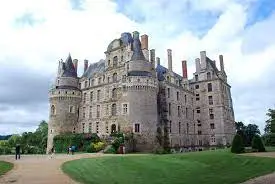
The Chateau de Brissa is a French château in the commune of Brissac-Quincé, located in the département of Maine-et-Loire, France. The Cossé-Brissac family, whose head bears the French noble title of Duke of Brissac, owns the property. Château de Brissac is still owned by the Cossé-Brissac family. The property is currently managed by Charles-André de Cossé-Brissac, Marquis of Brissac (b. 1962), who is the eldest son of François de Cossé-Brissac, the current Duke of Brissac One of the most infamous residents of the Château de Brissac is the ‘la Dame Verte’ or Green Lady.
The Green Lady is said to be the ghost of a woman by the name of Charlotte de Brézé, who was the illegitimate daughter of King Charles VII and his mistress, Agnes Sorel. She was also the half-sister of King Louis XI. In 1462, a marriage was arranged between Charlotte and Jacques de Brézé, a nobleman. It has been claimed that the marriage was politically motivated and that the two did not love each other. Additionally, it has been said that the two individuals had quite different characters. On May 31, 1477, Jacques is said to have returned from a hunting trip, had dinner with his wife, and then went to his room. It seems that the couple did not sleep in the same bed, and in the middle of the night, a servant woke Jacques up to inform him that his wife was having an affair with a man by the name of Pierre de Lavergne.
Jacques caught his wife and her lover red-handed, and in a fit of rage, murdered the adulterous couple. Apparently, Jacques moved out of the château shortly after the murder, as he could not stand the moaning of his late wife’s and her lover’s ghost Chateau.
Today, it is claimed that only the ghost of Charlotte remains in the Château de Brissac, as there are no reported sightings of Pierre’s ghost in the tower room of the chapel, where she can be found in her green dress, hence the name ‘Green Lady’ Chateau.
Additionally, it has been claimed that the ghost’s face has holes in place of her nose and eyes, perhaps a reflection of what was done to her when she was murdered. Her moans are also said to be heard throughout the château in the early hours of the morning.
Château Lagorce
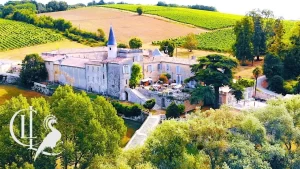
Castle Lagorce, formally known as the “noble house of the large force” is one of the most important buildings of heritage in Haux. The building has been sympathetically restored throughout, together with the grounds to make it a welcoming and pleasurable space. The castle acquired it’s name “Lagorce” or “The Great Gorce”, from a type of vegetation which appeared at the beginning of the XVI century.
According to a document from the 1700s, the castle originally had a moat. The oldest tower has walls 1.2 meters thick, and both of these features helped it to defend itself, as it became embroiled in feudal wars during the XIV, XV, and XVI centuries. Unfortunately, the residence was partly destroyed during the latter 2 of these centuries Chateau.
It is difficult to know who owned what during the XV century, as the land was a source of revenue for noble families, and it changed hands with regularity as marriages took place. The FAUGERES family, lords of Lagorce since at least 1516 did not escape this rule. Bonaventure de FAUGERES claimed to hold the rights to the Great Gorce and initiated proceedings against his brother (or brother-in-law), Estienne DUMENILH de FAUGERES. The claims were founded, in June 1599, Lord DUMENILH gave him 16,500 pounds in payment for his rights. He was not successful in his business, and Bonaventure seized the profit from his rent and from his agricultural activities, and in 1607 recuperated the whole of the property.
It was a short-lived battle for the ownership of the property because in 1621 and 1629, Estienne DUMENILHwas still, let’s say, “living” at Lagorce, whereas in 1636, another family was found to be living there; that of Menard de Maonaudon, married to marguerite de CURSOL. At the time of their installation at Lagorce, they accomplished major work on the property. In effect, all of the standing buildings are of the style of this epoch. However, their signature is preserved in a keystone in the form of a coat of arms uniting the Montandon and CURSOL family. On the walls, the date 1643, reflects this time of restoration.
The next period was a successful one, and when examining the works of the successive proprietors descending from Menaud DE Montreal, it is plain to see that money was no object. But, however magnificent the property was, a country Chateau residence would never take priority in the spending patterns of the noble families, who preferred to reside in their townhouses.
Château de Chambord
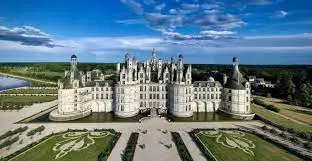
The Château de Chambord is unsettling to look at, a folly so grand it’s hard to take in, like something seen in a fever. I sit at the window of my room in the Relais de Chambord, a new hotel beside the castle, watching the last of the sun reflect off its pale sandstone, its turrets and domes, towering walls and endless windows. If it were warmer I would be on the terrace, waiting for the stars to emerge above this beautiful freak of a building. But it’s a cold March night, so I am in my room, imagining the animals — deer, wild boar, mouflon — emerging from the vast forest around me. The Loire Valley has at least 300 châteaux and Chambord is the largest of all. It has 426 rooms, 282 fireplaces and 77 sets of stairs, including one reputedly designed by Leonardo da Vinci, but none of that gives the true sense of it. It sits in a domaine national, a state-owned walled estate that everyone I meet — the hoteliers, the game wardens, the guides, even the police chief — tells me is the size of Paris, the boundary the length of the Périphérique. But that doesn’t give a feel for it either. Only the knowledge that, bar two unhappy stints of a few years each, nobody has lived here during its entire 499-year history, can really offer an understanding of it. It was built to impress and intimidate by Francis I, a king whose mother called him “César”, and who was working out his standing not just in relation to his fellow rulers — the Holy Roman emperor Charles V for one, England’s Henry VIII for another — but also to God. Chambord is, according to its director-general, Jean d’Haussonville, “an idea, rather than a luxury home, closer to the great pyramids or Angkor Wat than other castles”. I watch the stone of the great idea turn pink against the dying sky. The castle has closed for the day, the tourists who flock to it have gone. When I venture out to look at it at night, I will be alone.
Château de Versailles
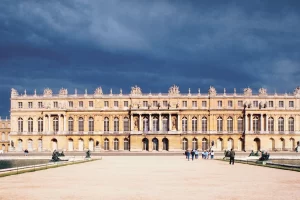
Louis XIII loved to hunt at Versailles and ordered the construction of a hunting lodge. Louis XIV who was traumatized by La Fronde des Princes, escaped from Paris and decided to settle the Royal residence in Versailles. The small castle of his father became a majestic palace and the symbol of his reign. His great grandson, Louis XV, who was born and died in Versailles transformed it. Louis XV is responsible for the full refurbishment of his apartments, the construction of the large theatre Royal Opera House where Mozart performed, The Neptune Fountain was built by Le Nôtre, slightly modified by Ange-Jacques Gabriel with the sculpted decoration glorifying the god of the sea added in 1740. Louis XVI inherited a fragile kingdom in which lie the roots of the French revolution. His wife Austrian Princess Marie Antoinette remains one of the most iconic characters in Versailles’ rich history. Rejected by some, admired by others, Marie Antoinette is so intimately associated with two brief decades in Versailles -until the French Revolution. In Versailles, her influence is everywhere from the eighteenth century fashion to arts and music with the Petit Trianon. Since the 19th century, Versailles has been a museum. In the 1920s, American John Davison Rockefeller helped to fund the rehabilitation of the Chateau and its gardens.
DISCLAIMER : ALL THE IMAGE RESOURCES USED IN THIS ARTICLE IS THE COURTESY OF :
- https://en.wikipedia.org/wiki/Ch%C3%A2teau_de_Puymartin
- https://great-castles.com/brissacghost.html
- https://www.youtube.com/watch?app=desktop&v=lnDf5JbXg30
- https://getyourguide.com/loire-valley-chateaux-l7956/chambord-skip-the-line-chateau-de-chambord-ticket-t183794/
- https://www.britannica.com/topic/Palace-of-Versailles

